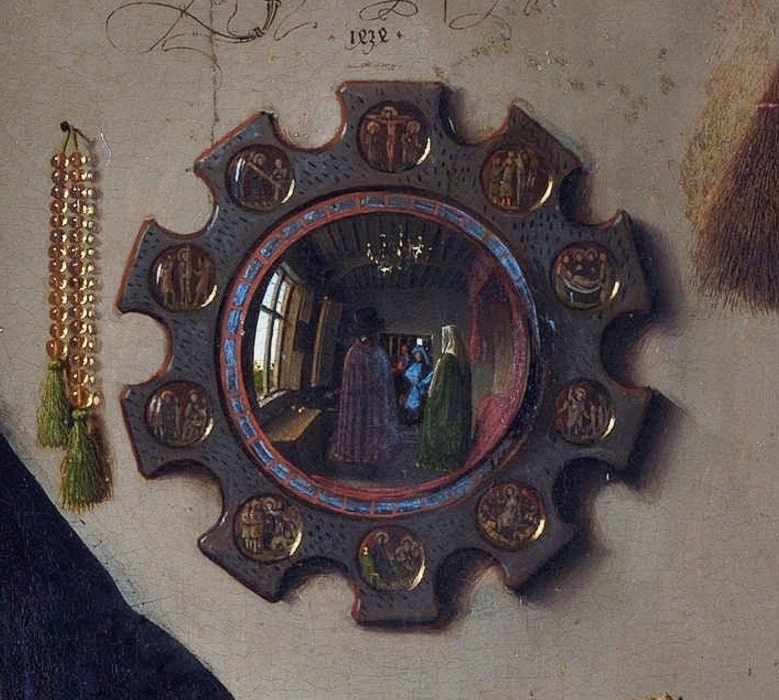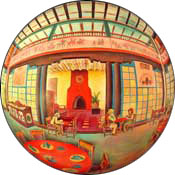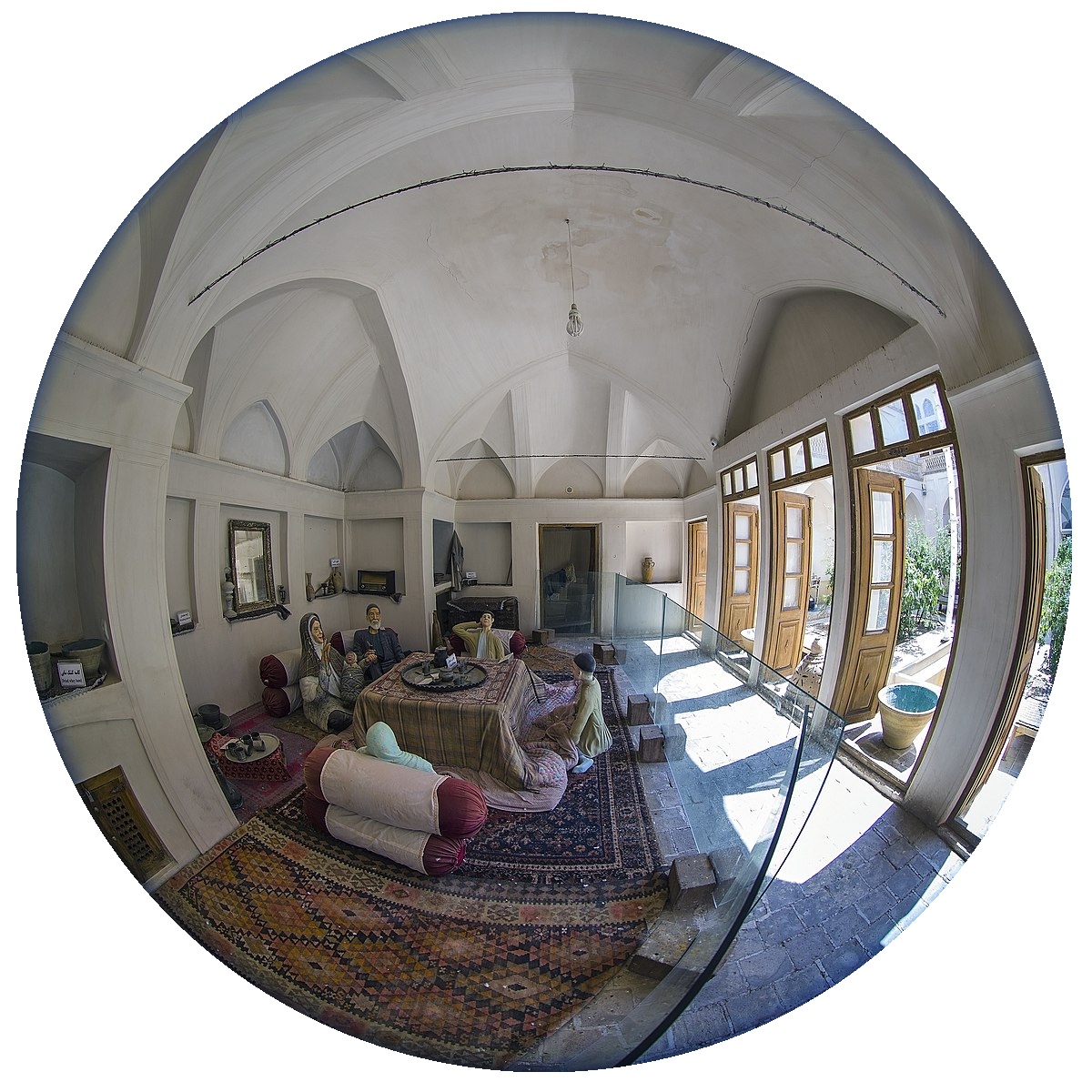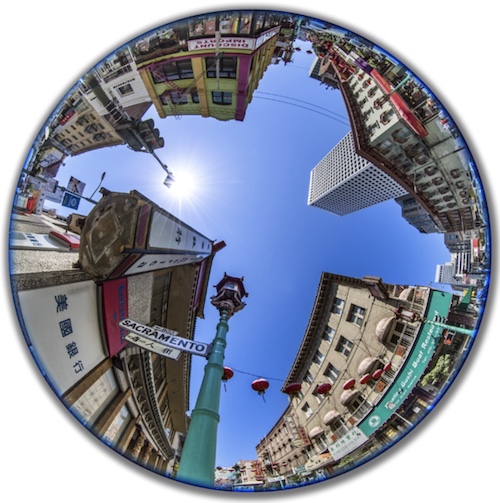At the same time that Brunelleschi et al were developing a geometry for Linear Perspective, Jan van Eyck demonstrated a curvilinear mode. As early as 1434 he was using oil paints instead of tempera. The advantage with oils is the brilliance and the transparency of colour. Van Eyck was immediately captivated by the potential of oil paints for rendering light: specifically reflections. The glass beads and the mirror in the Arnolfini Wedding Portrait are a perfect example. Of course it is a curved mirror, so van Eyck has very faithfully rendered the Arnolfinis' backs plus a reflection of the observers (one of them being van Eyck himself) in what amounts to Five Point Perspective.Five Point Projection

Detail from Jan van Eyck: The Arnolfini Wedding Portrait,1434
https://www.nationalgallery.org.uk/paintings/jan-van-eyck-the-arnolfini-portrait
This Dick Termes rendering illustrates the geometry of Five Point Projection which maintains a Central Vanishing Point and places Vanishing Points top, bottom, left and right on a circular picture plane. All Orthogonals converging on these four points are curved lines. All Orthogonals converging on the Central Vanishing Point are straight lines. A wide angle camera lens produces a similar effect.


